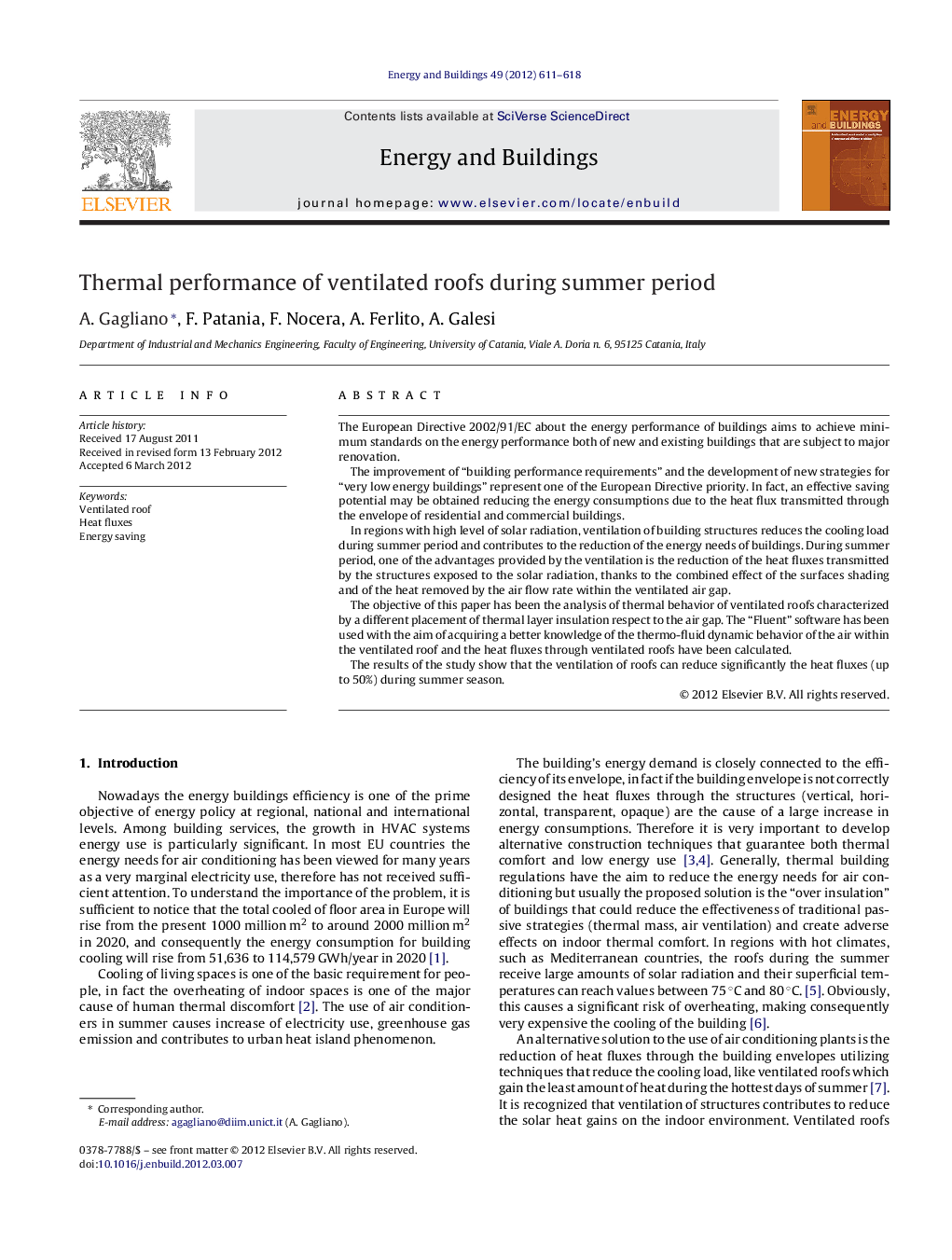| Article ID | Journal | Published Year | Pages | File Type |
|---|---|---|---|---|
| 263971 | Energy and Buildings | 2012 | 8 Pages |
The European Directive 2002/91/EC about the energy performance of buildings aims to achieve minimum standards on the energy performance both of new and existing buildings that are subject to major renovation.The improvement of “building performance requirements” and the development of new strategies for “very low energy buildings” represent one of the European Directive priority. In fact, an effective saving potential may be obtained reducing the energy consumptions due to the heat flux transmitted through the envelope of residential and commercial buildings.In regions with high level of solar radiation, ventilation of building structures reduces the cooling load during summer period and contributes to the reduction of the energy needs of buildings. During summer period, one of the advantages provided by the ventilation is the reduction of the heat fluxes transmitted by the structures exposed to the solar radiation, thanks to the combined effect of the surfaces shading and of the heat removed by the air flow rate within the ventilated air gap.The objective of this paper has been the analysis of thermal behavior of ventilated roofs characterized by a different placement of thermal layer insulation respect to the air gap. The “Fluent” software has been used with the aim of acquiring a better knowledge of the thermo-fluid dynamic behavior of the air within the ventilated roof and the heat fluxes through ventilated roofs have been calculated.The results of the study show that the ventilation of roofs can reduce significantly the heat fluxes (up to 50%) during summer season.
► Computational fluid dynamics analysis of ventilated roofs. ► Three ventilated roofs characterized by equal thermal resistance have been studied. ► Summer performances of ventilated roofs have been analyzed. ► The effects of the position of the thermal insulating layer have been evaluated. ► The reduction of heat fluxes through ventilated roof have been calculated.
